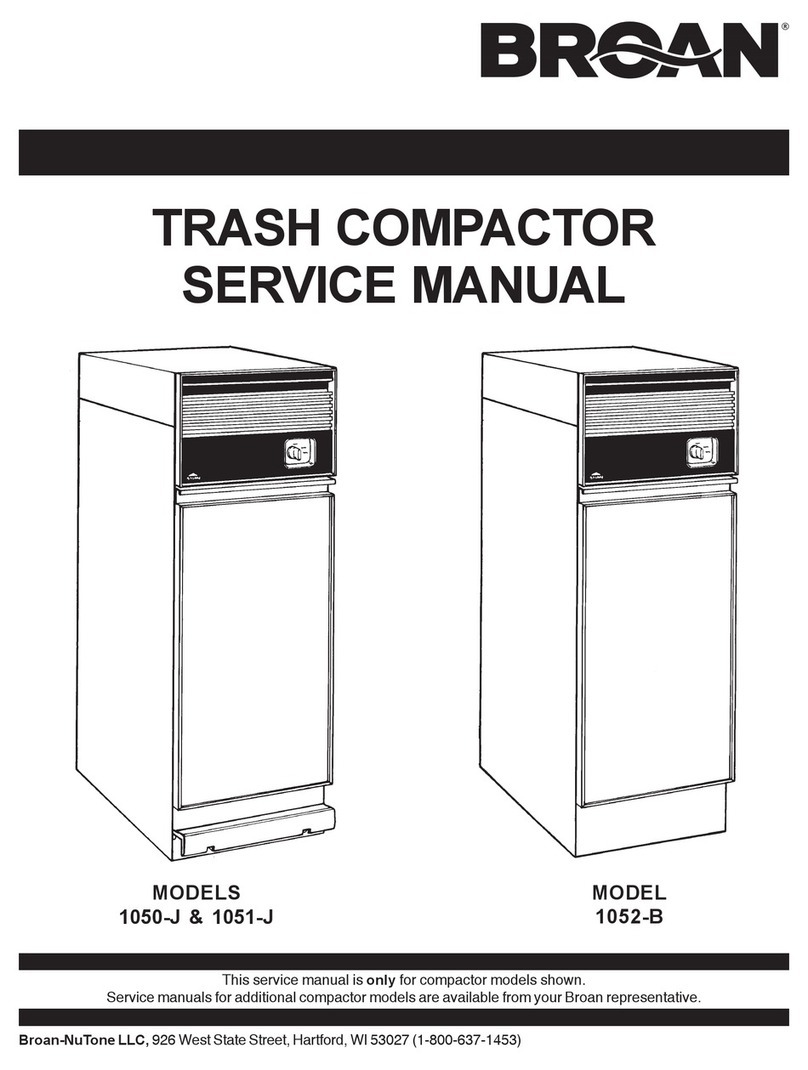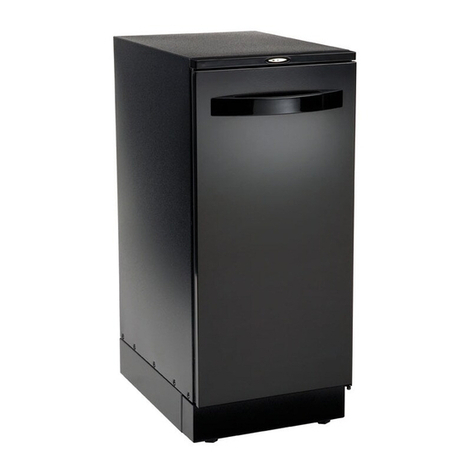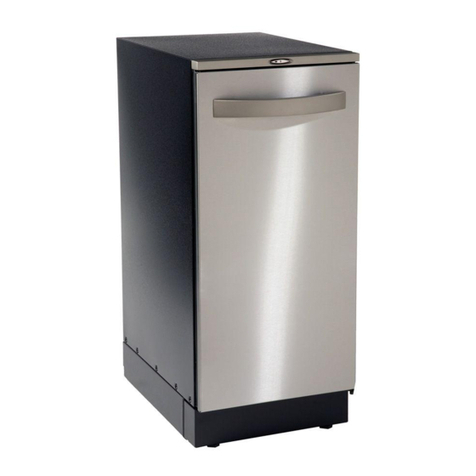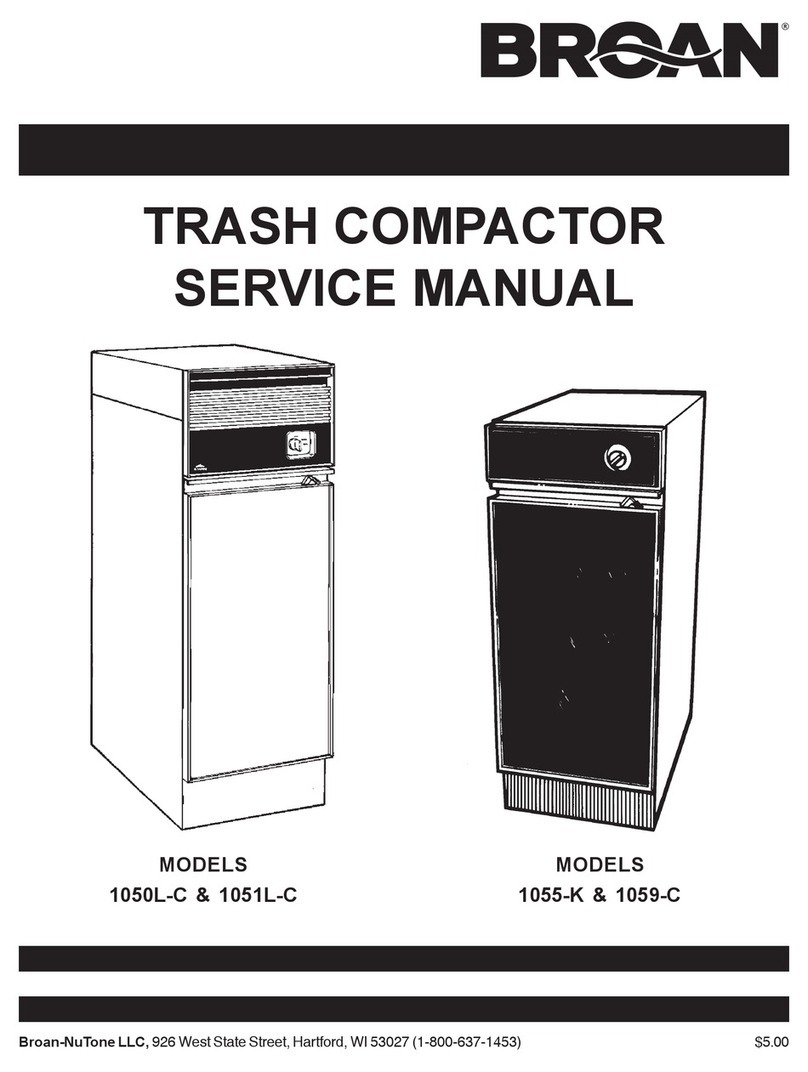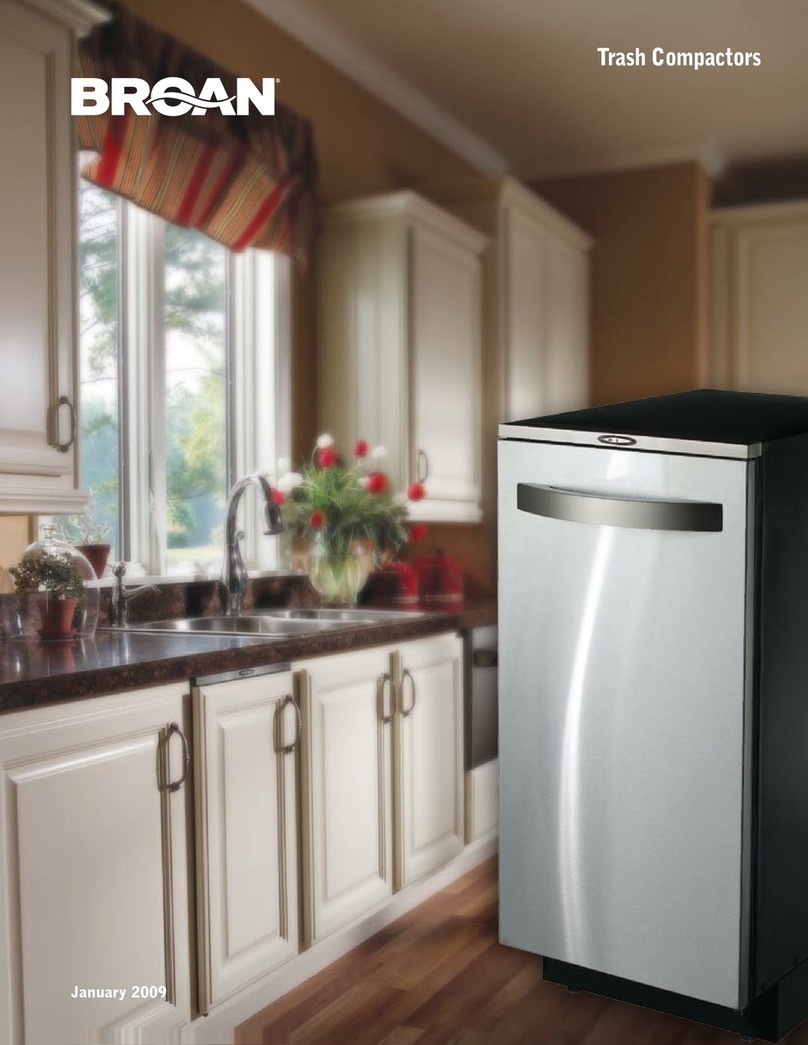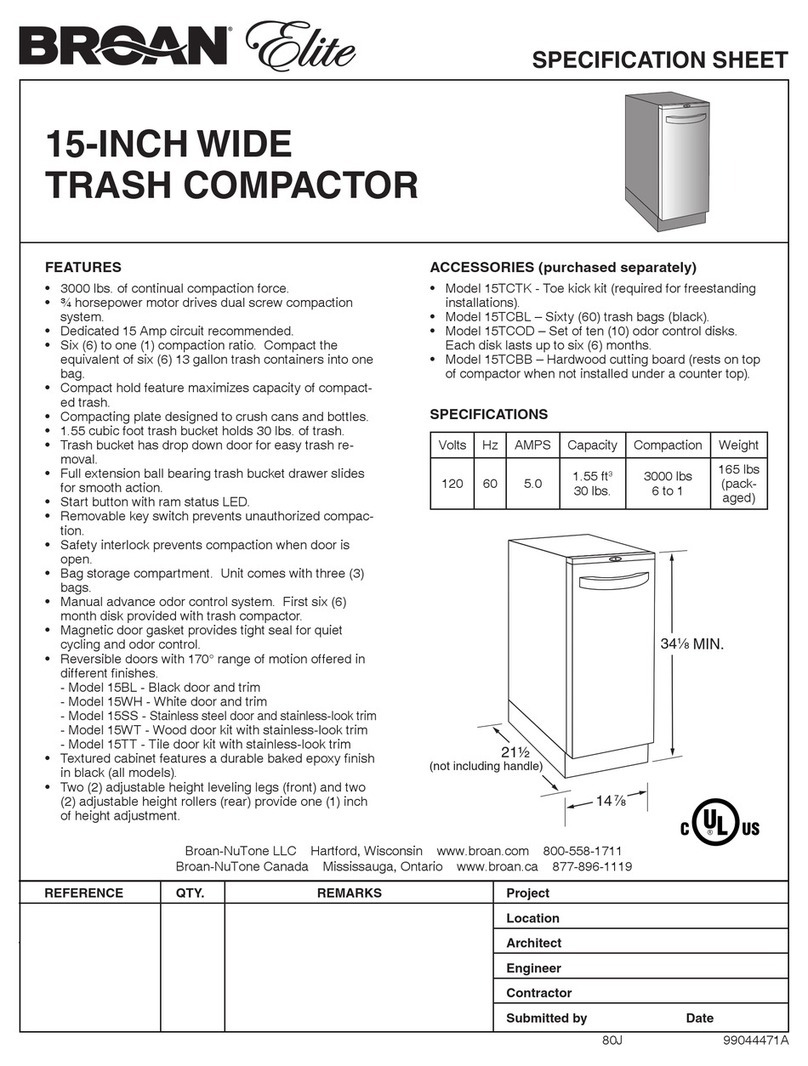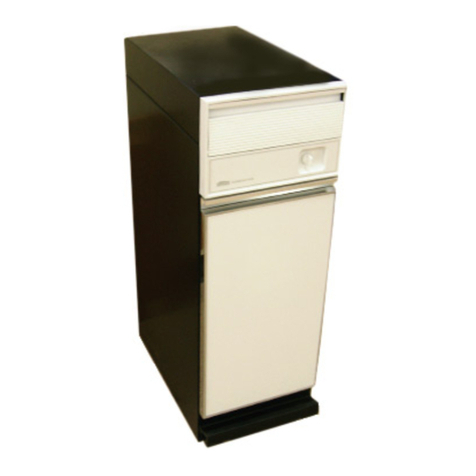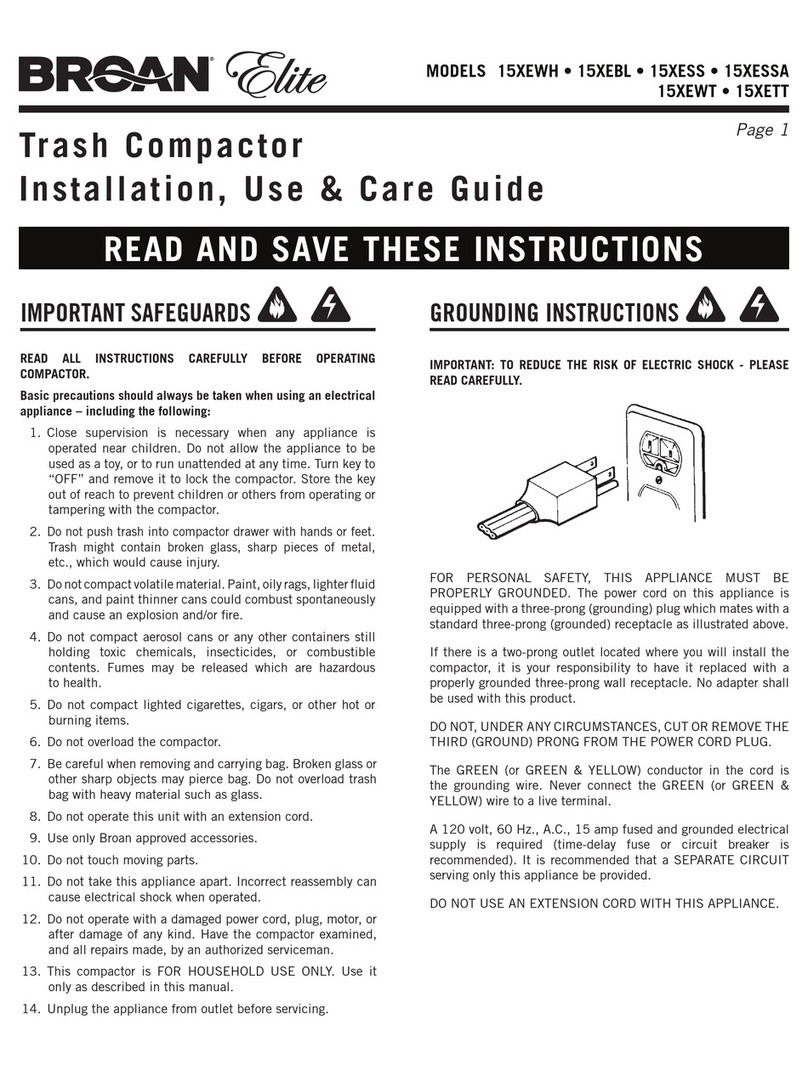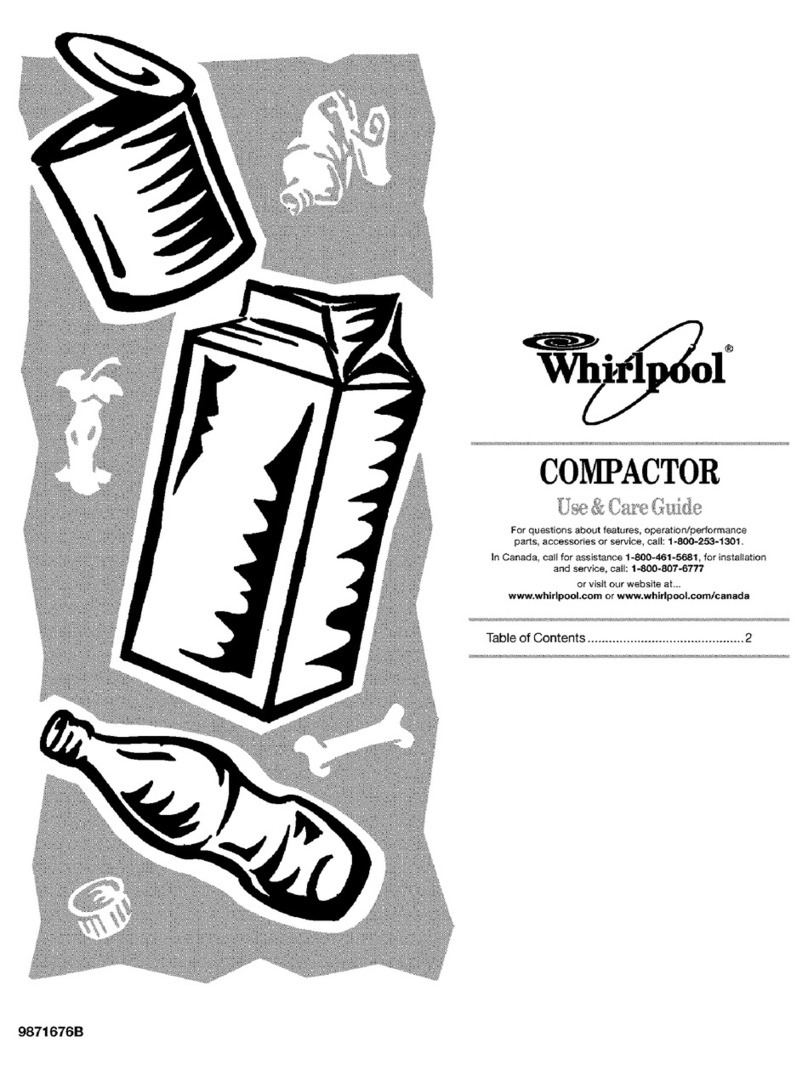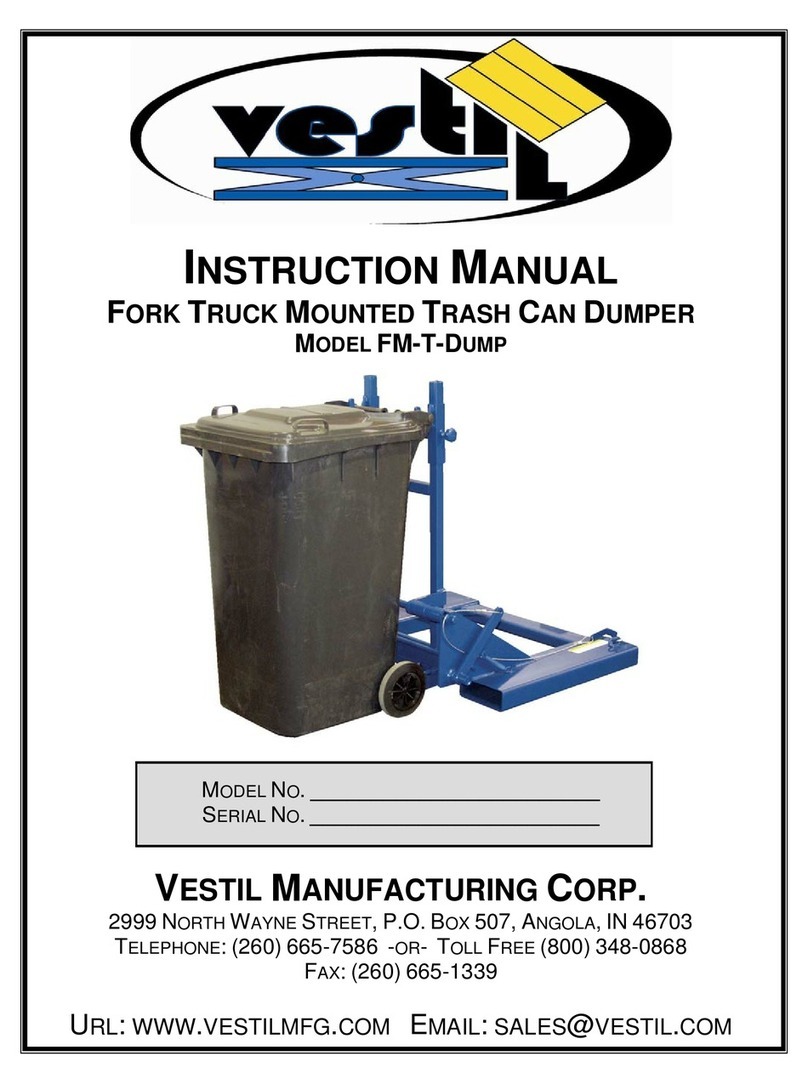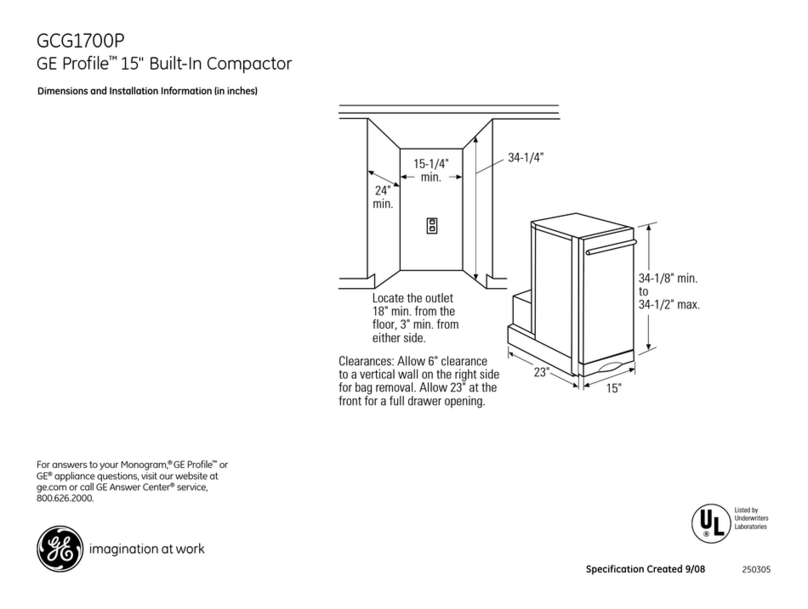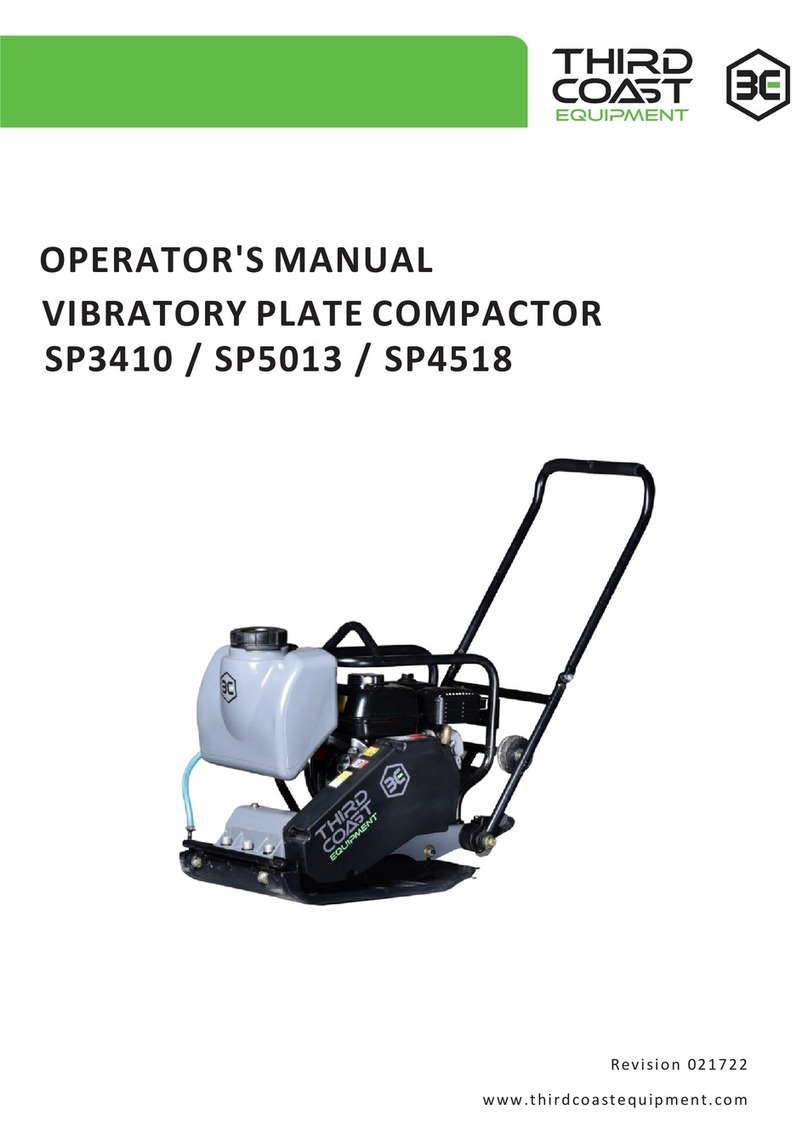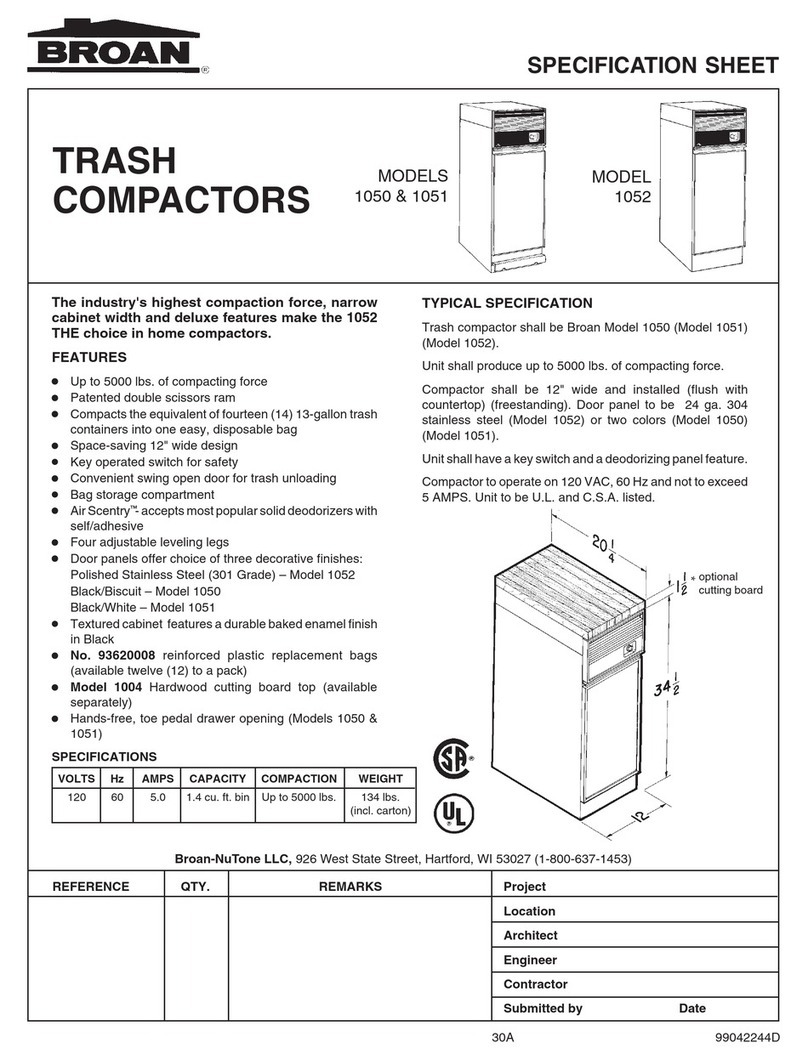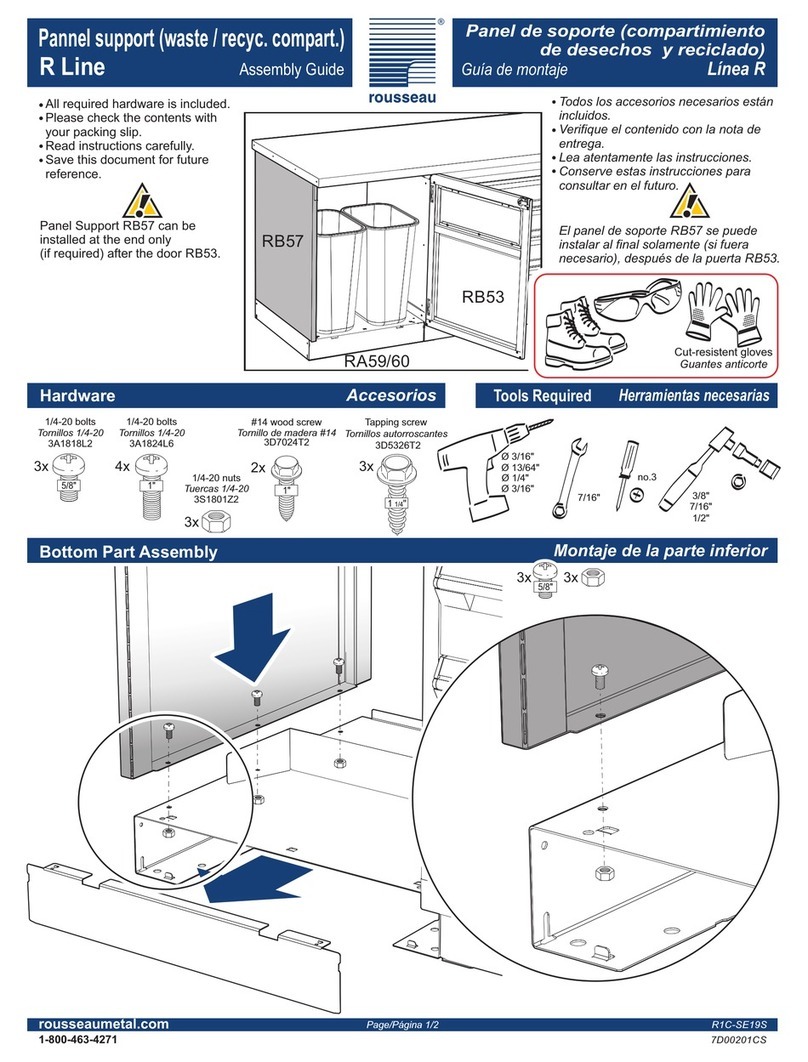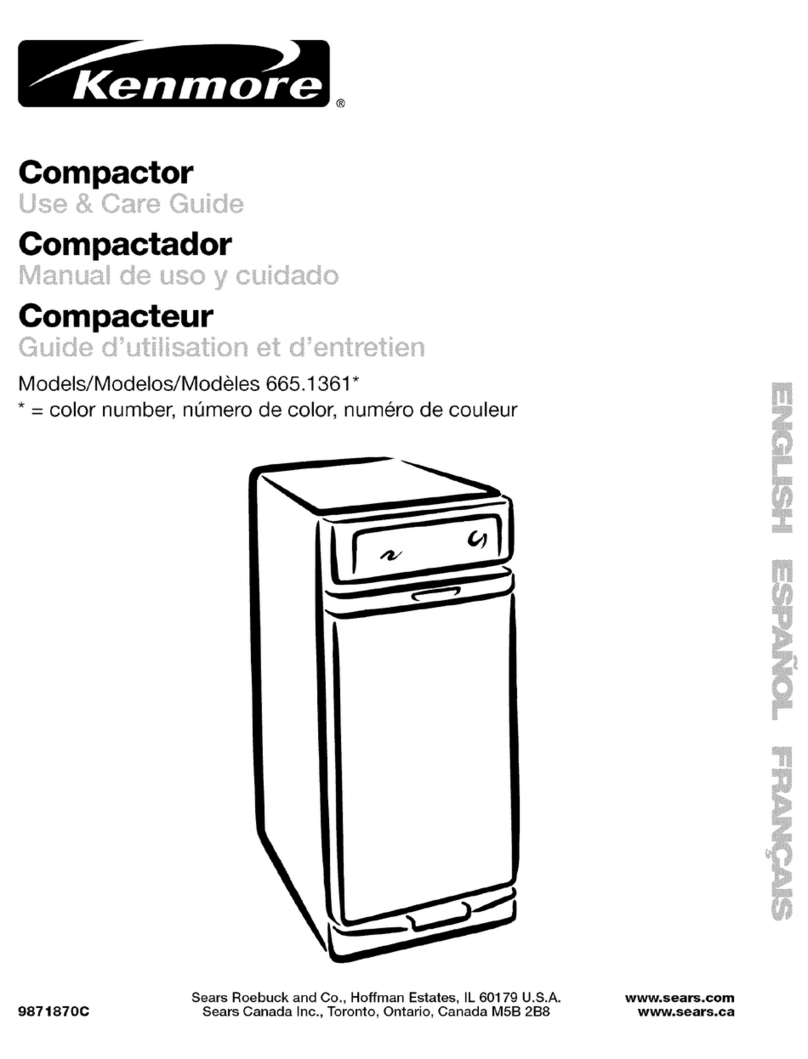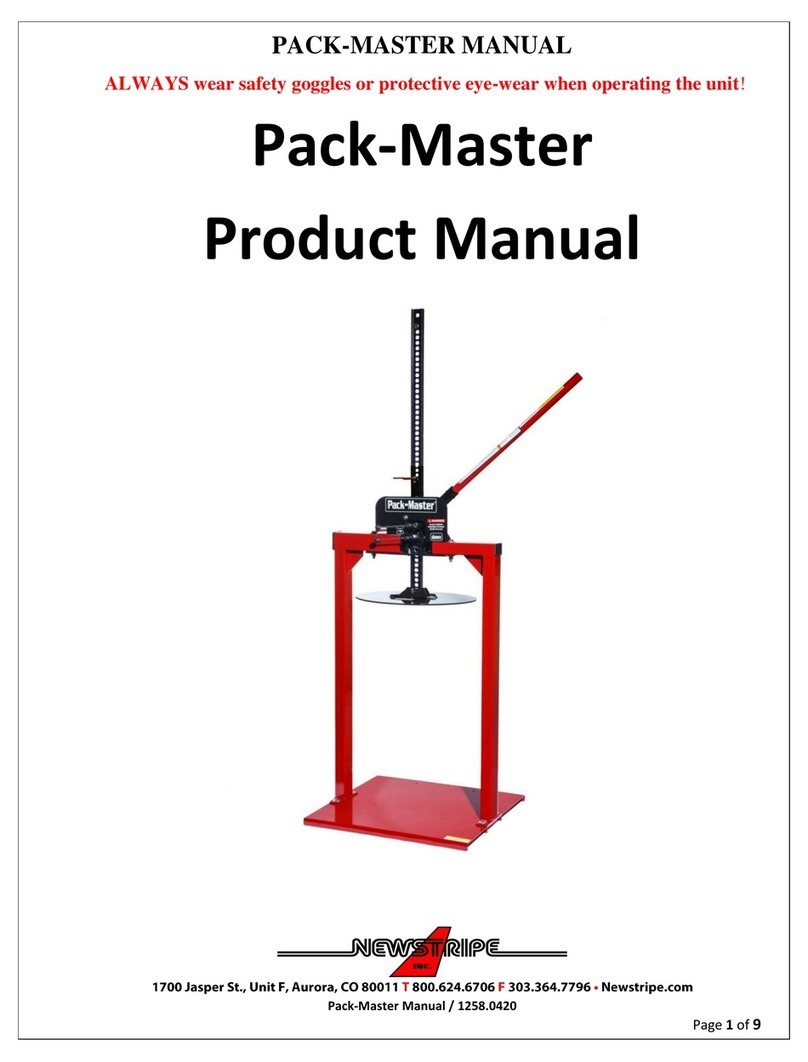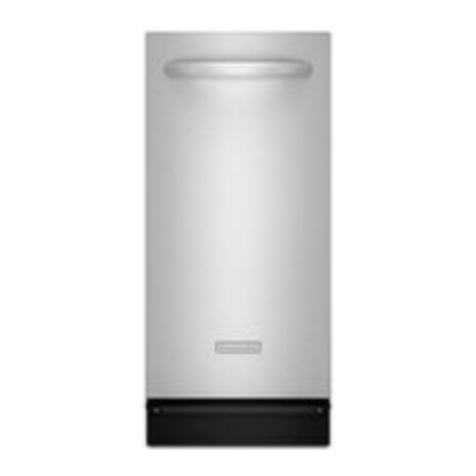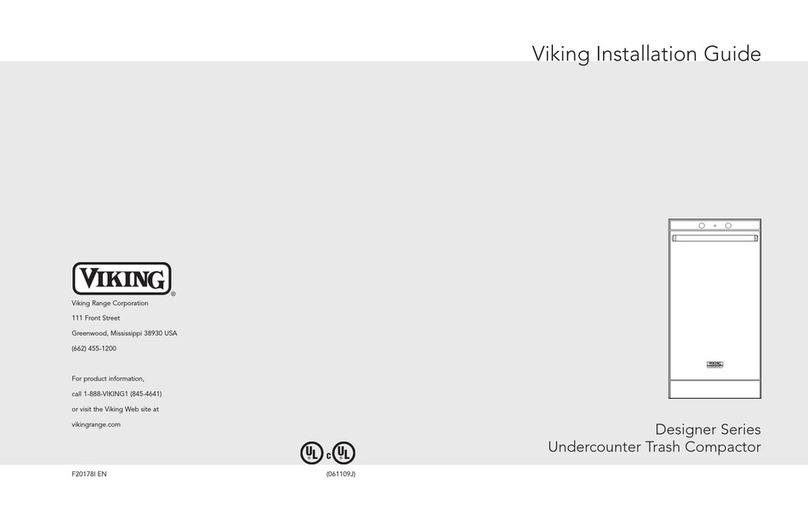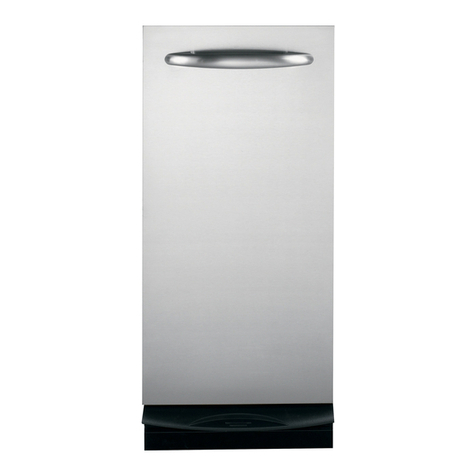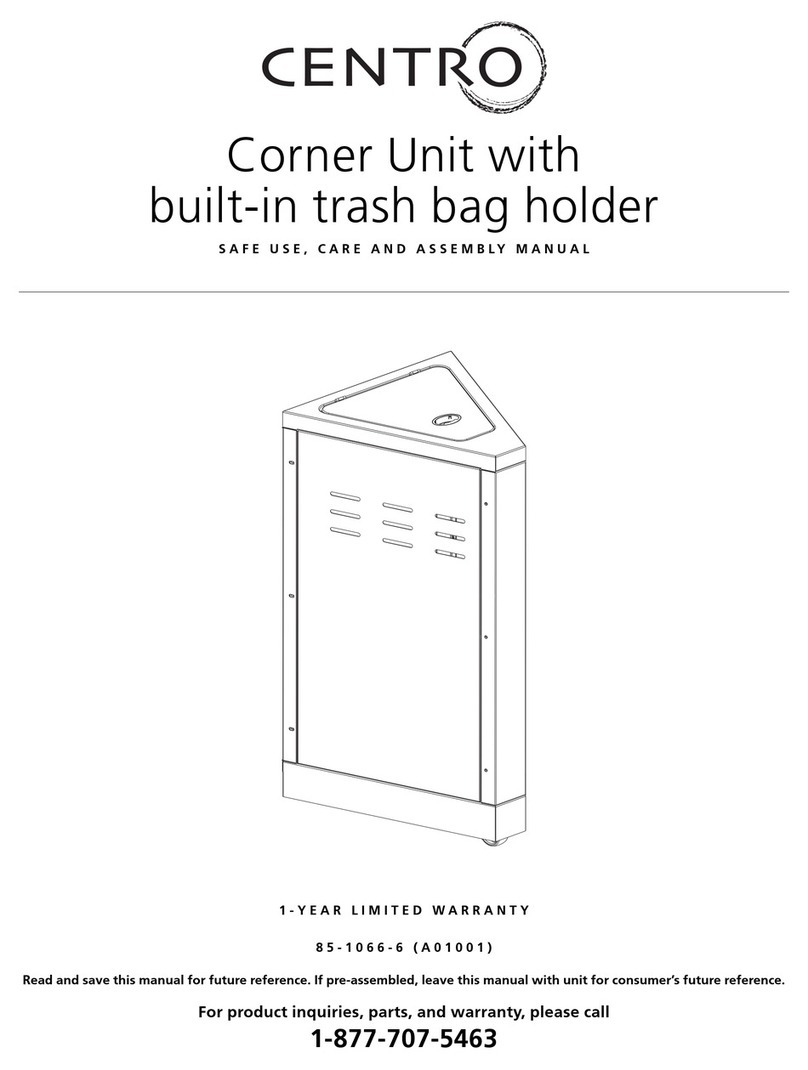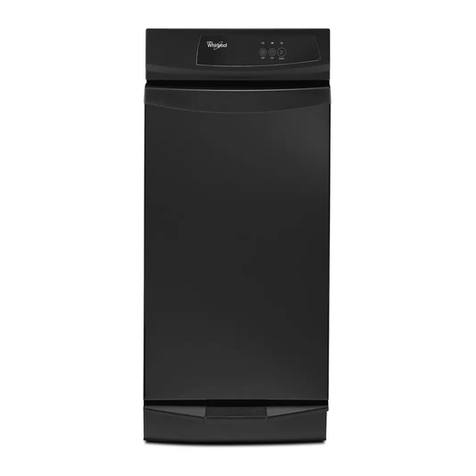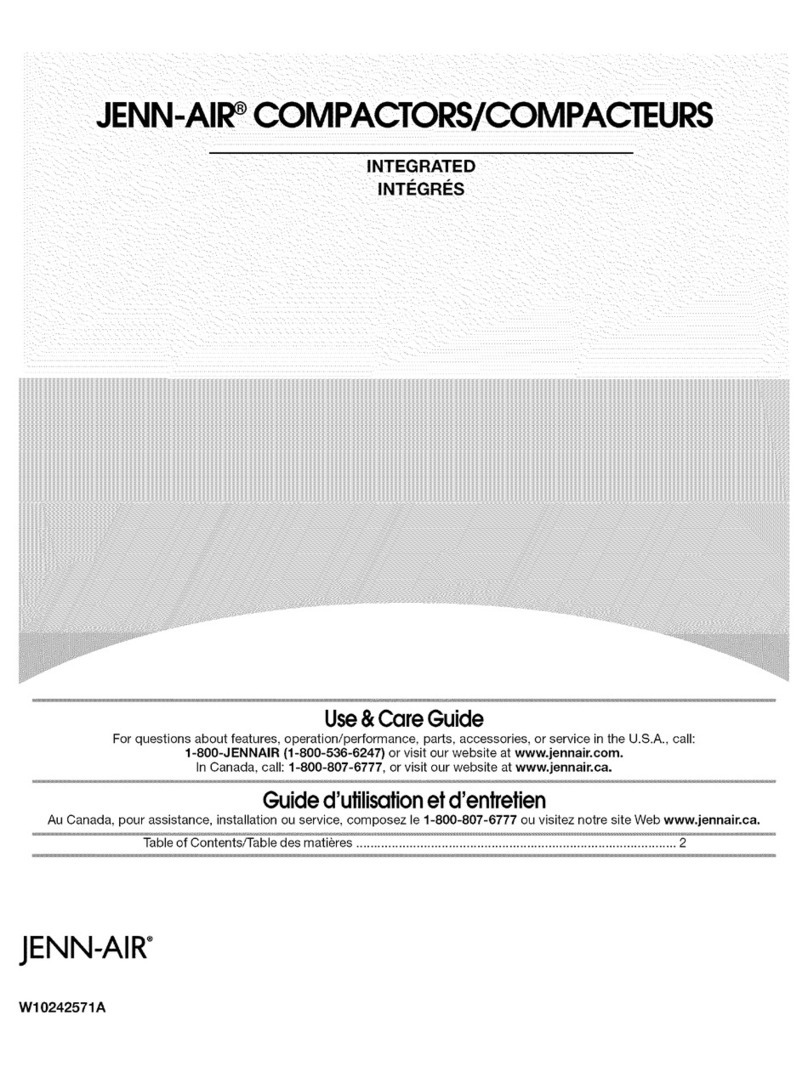
3
Table of Contents
Table of contents
Safe Servicing Practices............................................................ 2
Grounding Instructions.............................................................. 2
Features....................................................................................... 4
Section A – Installation.............................................................. 5
Free-Standing............................................................................... 5
Built-In Installation ........................................................................ 5
Mounting Straps....................................................................... 5
Under-Counter Opening .......................................................... 5
Cord Clamp ............................................................................. 6
Leveling the Compactor................................................................ 6
Section B – Cabinet.................................................................... 7
Trash Bucket ................................................................................. 8
Remove ................................................................................... 8
Bucket Handle .............................................................................. 8
Remove and Replace .............................................................. 8
Slide Rails (Cabinet)..................................................................... 9
Remove and Re-install ............................................................ 9
Slide Rails (Bucket) ...................................................................... 9
Remove and Re-install ............................................................ 9
Door Assembly ............................................................................. 10
Remove and Re-install ............................................................ 10
Reverse Door Hinge Position................................................... 11
Safety Interlock Actuator............................................................... 13
Remove and Re-install ............................................................ 13
Gasket Assembly.......................................................................... 14
Remove and Re-install ............................................................ 14
Top Trim Cover Assembly ............................................................. 15
Remove and Re-install ............................................................ 15
Section C – Power Unit Mechanism.......................................... 16
Drive Belt...................................................................................... 17
Remove and Re-install ............................................................ 17
Main Motor.................................................................................... 18
Remove and Replace .............................................................. 18
Complete Power Unit Mechanism................................................. 19
Remove and Re-install ............................................................ 19
Drive Wheels ................................................................................ 19
Remove and Replace .............................................................. 19
Ram Screw Assembly................................................................... 20
Remove and Replace .............................................................. 20
Section D – Electrical Components.......................................... 23
Start Switch .................................................................................. 24
Remove and Replace .............................................................. 24
Access to Components................................................................. 24
Remove Cabinet Cover............................................................ 24
Re-install Cabinet Cover.......................................................... 26
Control Panel Assembly ............................................................... 27
Remove and Re-install ............................................................ 27
Display Module Assembly............................................................. 28
Remove and Re-install ............................................................ 28
Power Supply Board ..................................................................... 28
Remove and Re-install ............................................................ 28
Control Board ............................................................................... 29
Remove and Re-install ............................................................ 29
Key Switch.................................................................................... 30
Remove and Replace .............................................................. 30
Interlock Switch Assembly............................................................ 30
Remove and Re-install ............................................................ 30
Upper Limit Switch Assembly....................................................... 31
Remove and Replace .............................................................. 31
Lower Limit Switch........................................................................ 31
Remove and Replace .............................................................. 31
Motor Centrifugal Switch Assembly.............................................. 32
Remove and Replace .............................................................. 32
Motor Capacitor............................................................................ 32
Test, Remove and Replace...................................................... 32
Odor Disk Gear Motor .................................................................. 34
Remove and Replace .............................................................. 34
Power Cable ................................................................................. 35
Remove and Replace .............................................................. 35
Section E – Troubleshooting
Troubleshooting Table ................................................................... 36
Section F – Specifications
Specifications Table ...................................................................... 39
Section G – Diagrams and Parts Lists
Wiring Schematic ......................................................................... 40
Drawing and Parts List – Doors ................................................... 41
Drawing and Parts List – Cabinet ................................................ 42
Drawing and Parts List – Mechanism .......................................... 43
